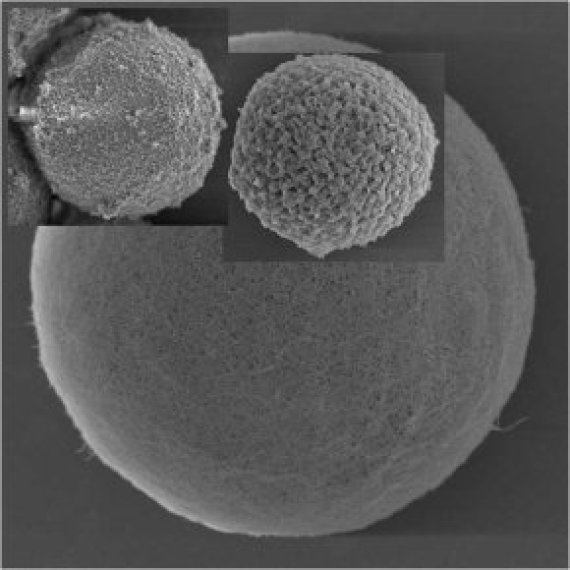Leonard Sagis, associate professor of Food Physics, struck on this idea after observing artificial protein fibrils. These are stiff little protein rods which in turn comprise protein fragments stuck together side-by-side. Structures like these are present in the brains of Alzheimer’s patients. It seems that they can also be manufactured in the laboratory by heating a protein for ten hours in an acidic environment. Of note is that digestive enzymes can break them down safely.
A ball of wool
The fibrils can be used as building material for capsules. Sagis uses a drop of oil coated with charged protein fragments as ‘scaffolding’. This is coated with alternate layers of positively charged and negatively charged fibrils. The end result seen under the microscope strongly resembles a ball of wool. This technique is very much better than current methods of producing capsules. ‘You can control the mechanical and release properties much better,’ says Sagis. This is done by using different basic proteins or by adding on more layers of fibrils. The consistent final product contrasts sharply with the ‘thick layers of amorphous material’ sometimes seen when old techniques of producing microcapsules are used. In the meantime, the influential Reviews of Modern Physics has recently published an overview written by Sagis of the theory behind complicated border surfaces, such as those of ‘his’ microcapsules.

